An amalgamation of Maserati A6GCS/53 and 300S parts, with a Fantuzzi-styled body to top it off. 'Bitsas' have never looked so good. Little history was known about this fascinating car until recently, when the owner pieced together the story of how a factory works racing Maserati became a prototype and then a coachbuilt one-off road car.
The 150 GT Spider started out as an A6GCS/53, one of a run of 52 cars fitted with a 170bhp 2.0 litre twin cam straight-six that Maserati built from 1953 to 1955, and one of a handful that Maserati’s own works team raced in 1954. After being thoroughly abused by the end of the '54 racing season, Maserati’s racing department stripped the A6GCS/53 to its chassis and rebuilt it as a prototype of the 300S, fitted with Maserati’s 3.0-liter straight-six and finished in 1955. As Walter Bäumer wrote in his book on the Maserati 300S: "
Perhaps the initial concept (for the 300S) was to install the bigger engine in a modified but basically standard A6GCS chassis, but it quickly became obvious that this combination would not be competitive against Ferrari. A new chassis design was required for Maserati to make best use of the bigger engine."
And so Maserati shelved the car, as it continued to develop and eventually build the 300S. Concurrently, it was also developing the 150S, a smaller four cylinder car designed for customers to enter in the smaller 1500cc classes, so with an eye to create a road-going version of the 150S, Maserati’s racing department once again stripped the A6GCS-cum-300S prototype to its chassis. This time, they installed a 150S engine, backed by a gearbox from an A6G/2000, and slowed by 250F Grand Prix brakes. They then turned to Medardo Fantuzzi, who was responsible for the designs of both the A6GCS/53 and the 300S, to create a convertible body suitable for a street-driven, rather than track-orientated car.
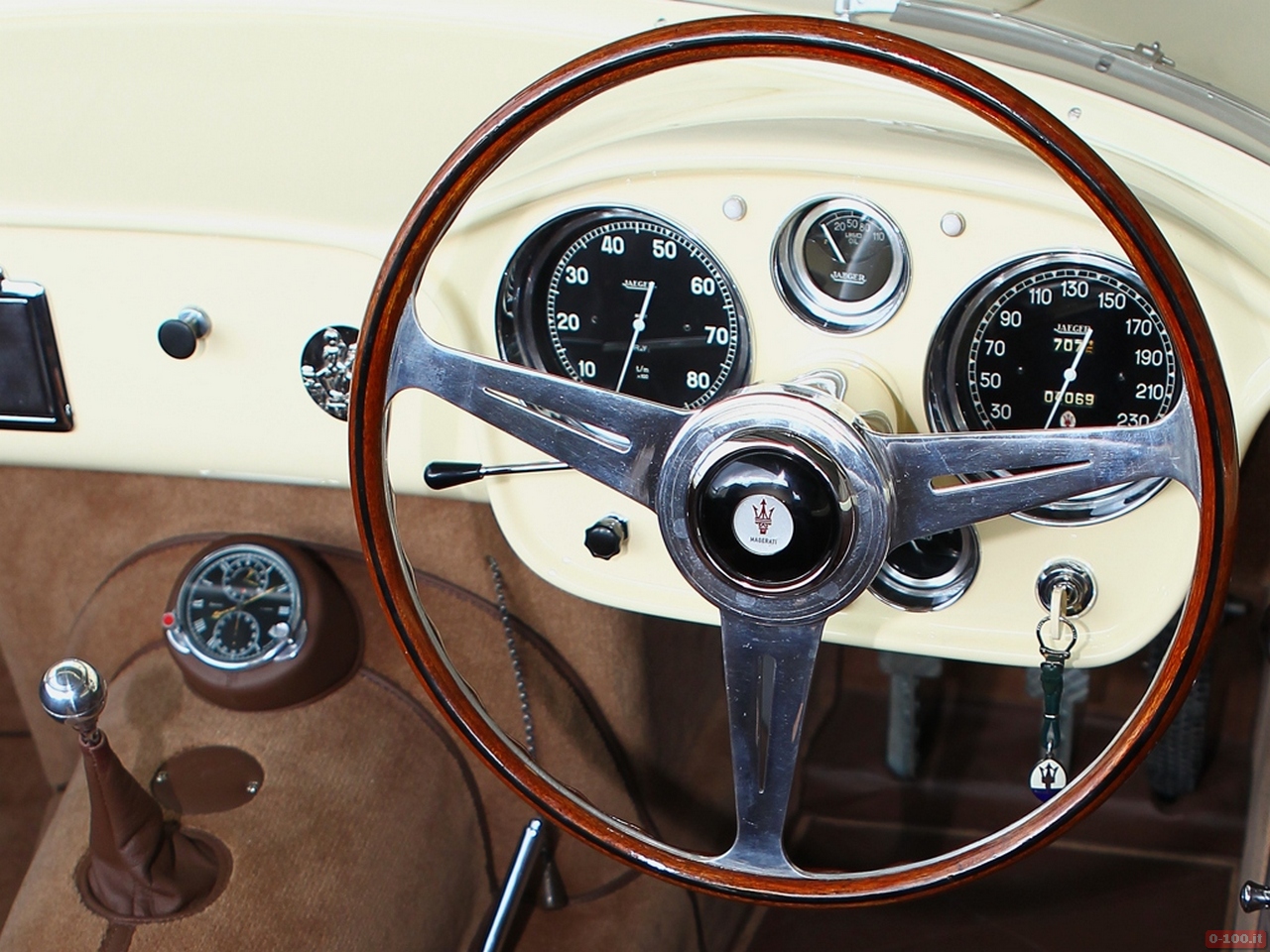
The 150 GT Spider looked impressive, but Maserati declined to produce it, citing its prohibitive cost. Bäumer has stated that Hans Tanner tested the car and found it lacking in terms of handling and quality, he believes that Tanner’s report came from the newly finished car having been unsorted. Brynan noted, however, that the car’s failure to reach development in part led Maserati to begin development of the 3500 GT, the company’s serious road car.
So for the next three years, the 150 GT Spider spent its days skulking in the Maserati workshop, seemingly destined to never see the light of day. Not many photos seem to exist of the car in this period; the one here shows the 150GT with a 300S, chassis no. 3503 reserved for Jean Behra for the Mille Miglia in '57 but destroyed by Behra in testing.
In 1960, the company sold it to one of its distributors in the U.K., where it remained until sometime in the '80s, when it was sold to a German collector. It was then purchsed by the current owner, who in 2007 had it painted red with a black interior; he began to research its history when he found that the documentation he got with it didn't make any sense. That led him to discover the above history, confirmed by Adolpho Orsi and Bäumer, so he then restored it back to its original cream body with brown interior..
And at Gooding’s Scottsdale auction in January 2013, it sold for $3.08 million.
- Mr Fabulous
Photos by Mathieu Heurtault, Walter Bäumer. Raw prose from 0-100.it

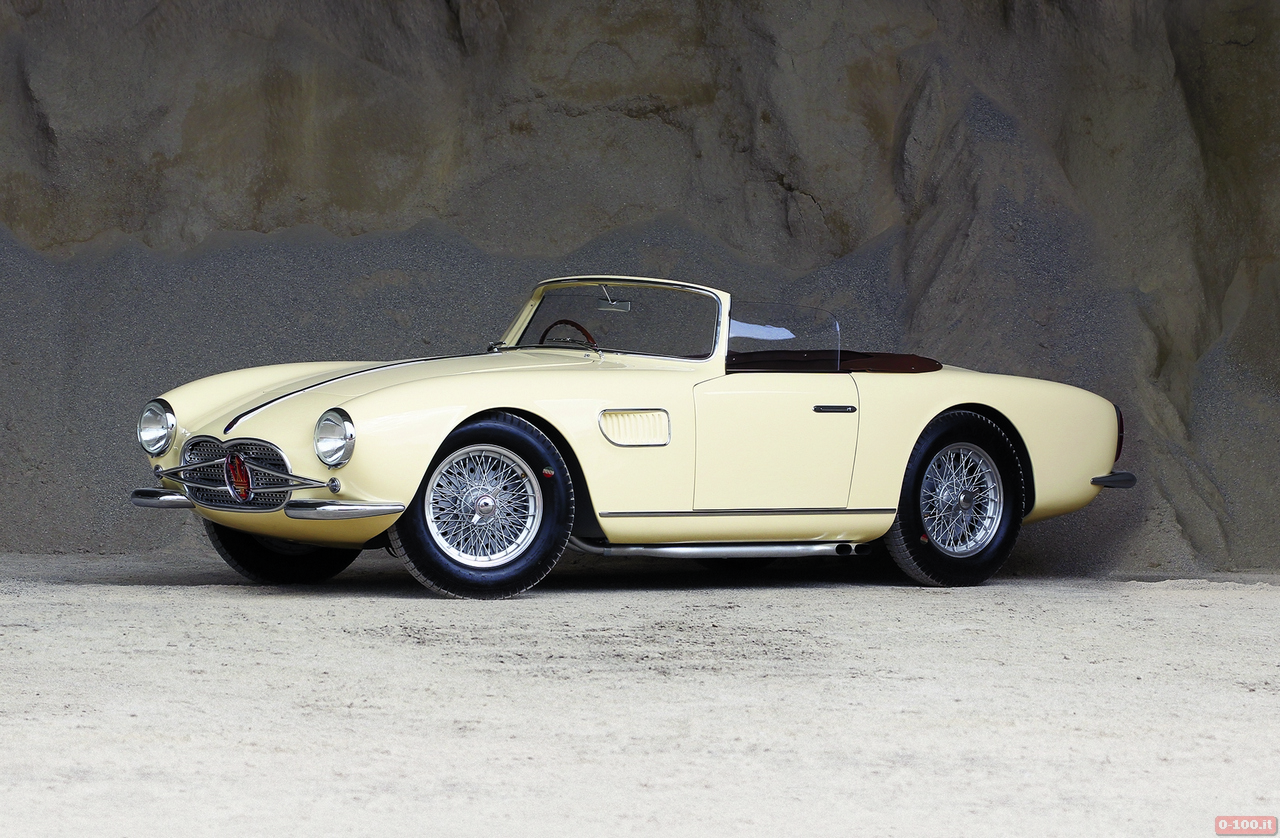
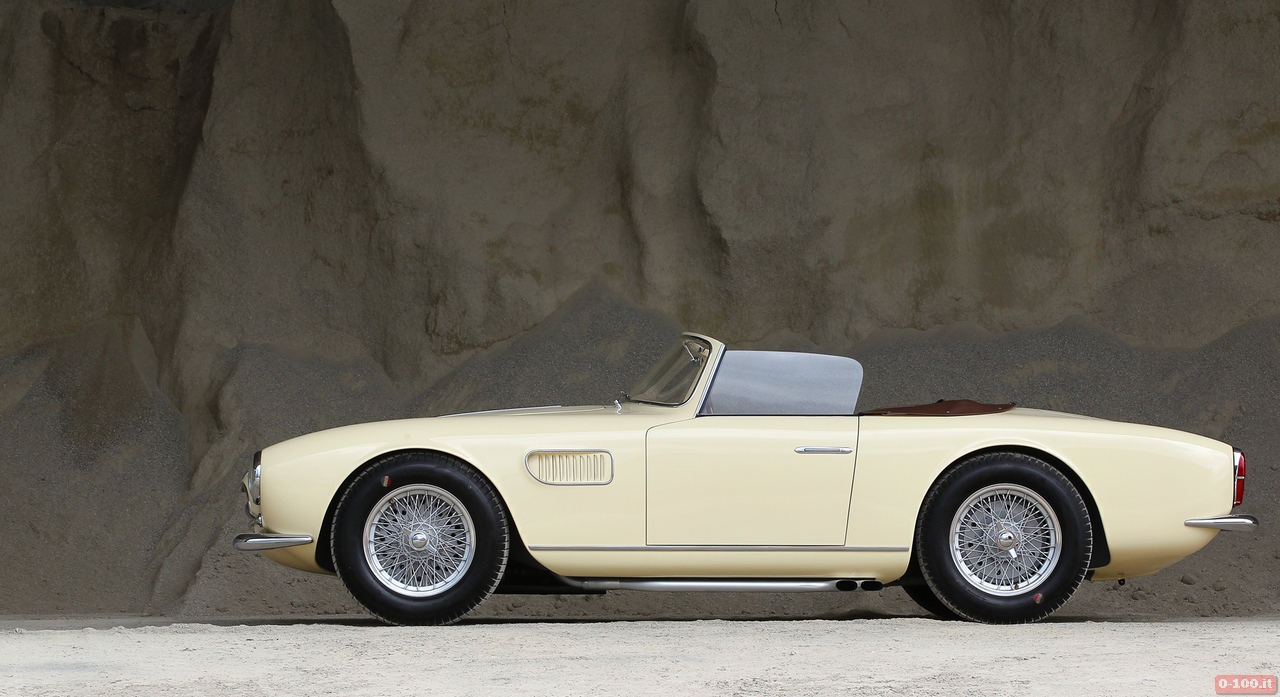
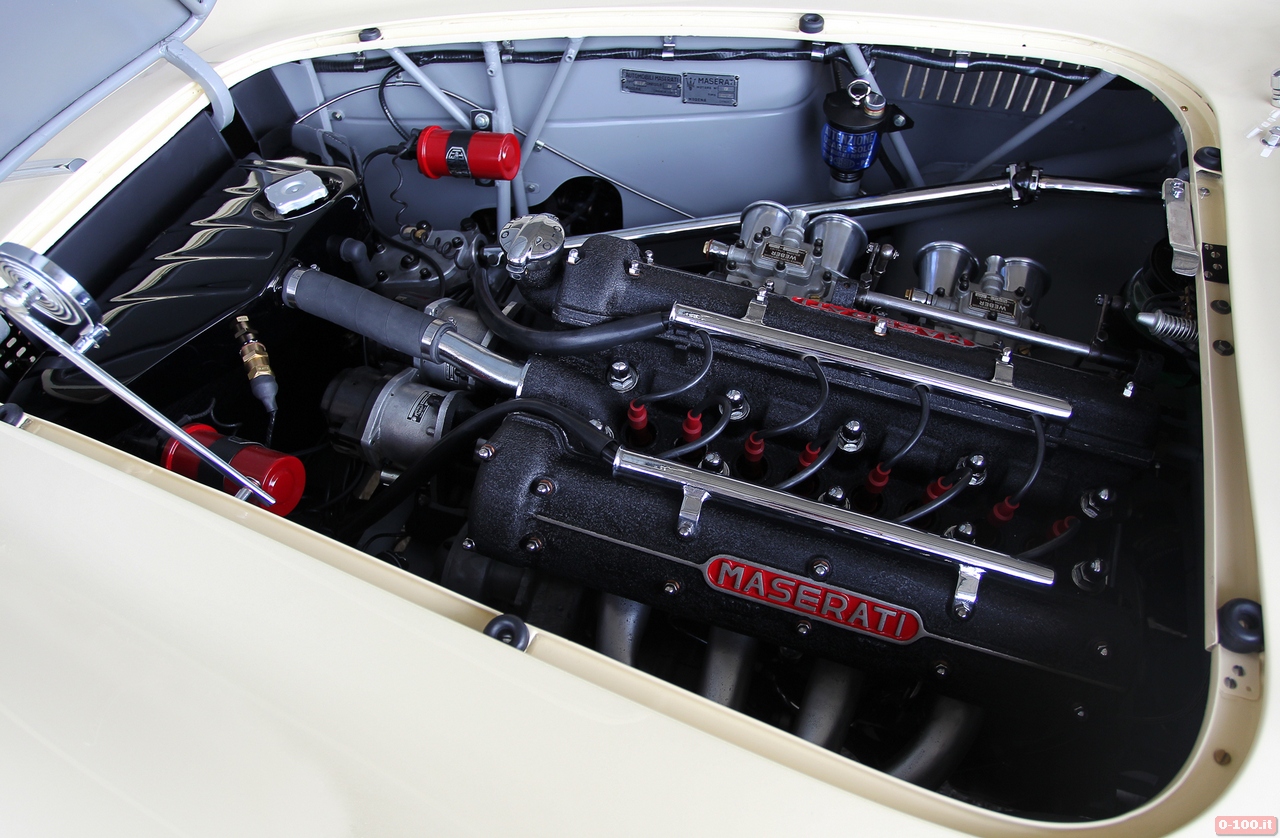

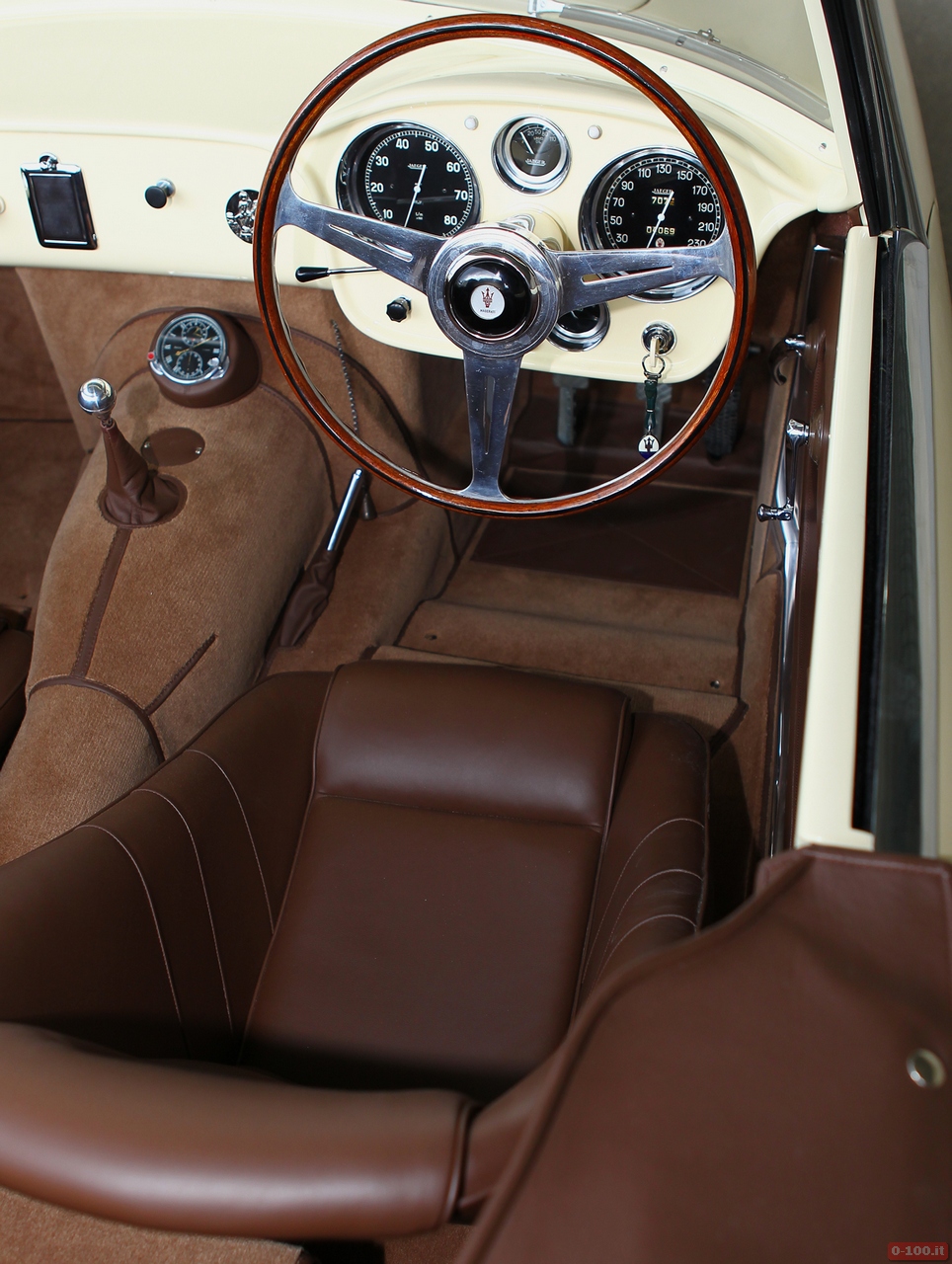
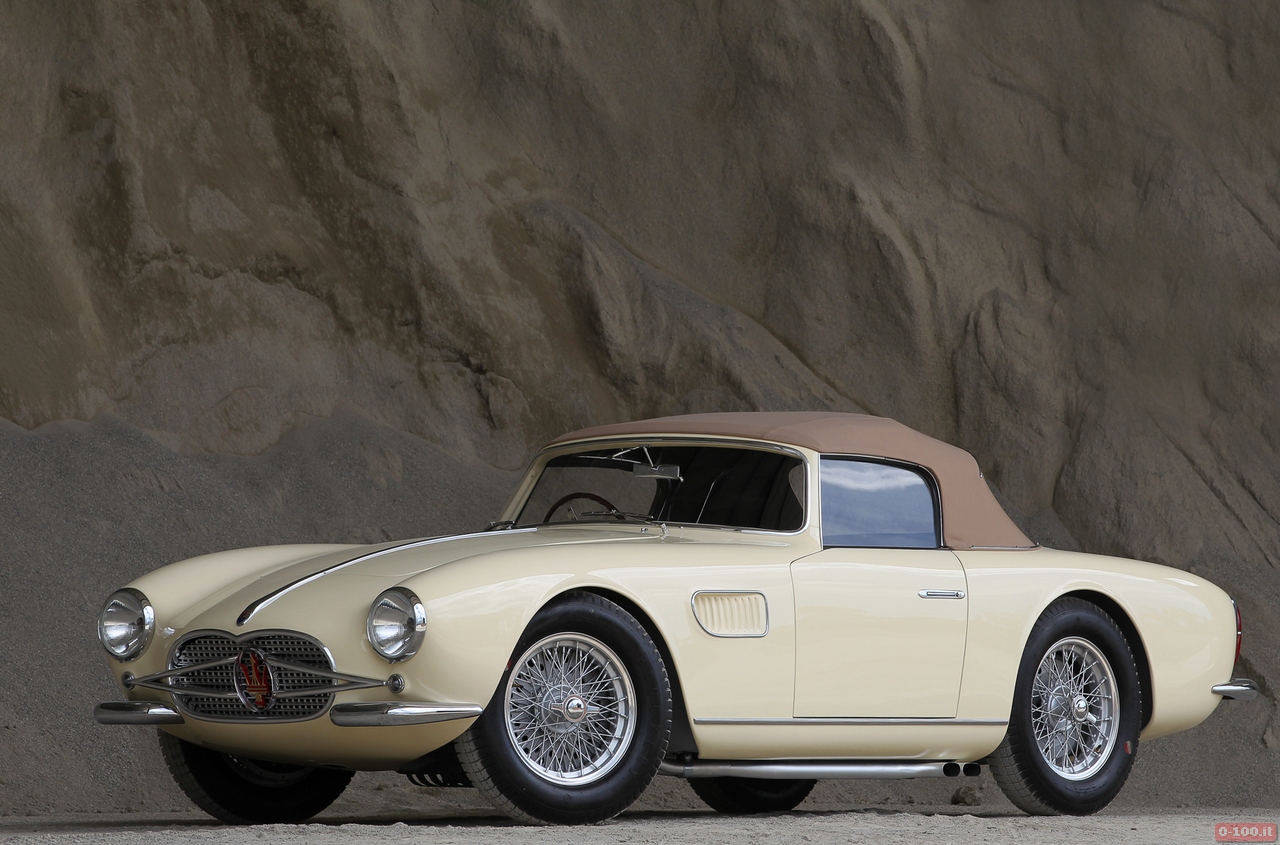
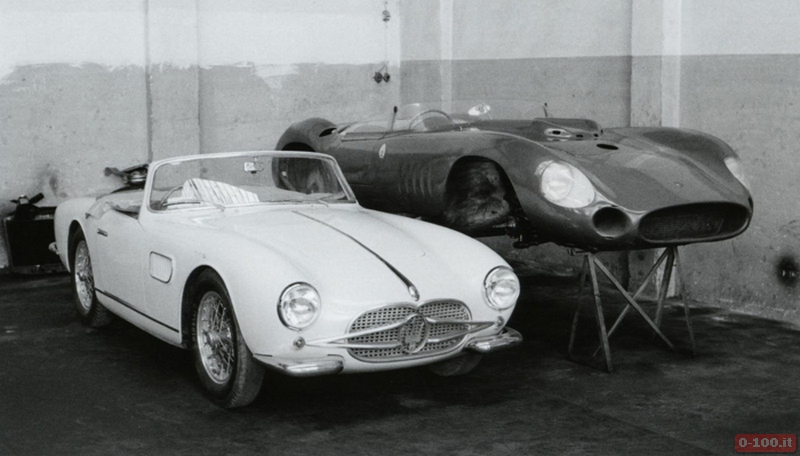
No comments:
Post a Comment